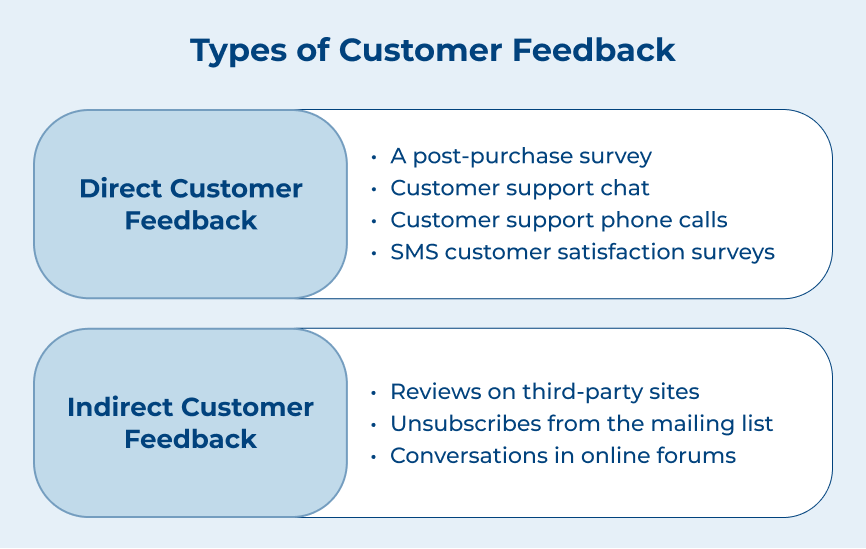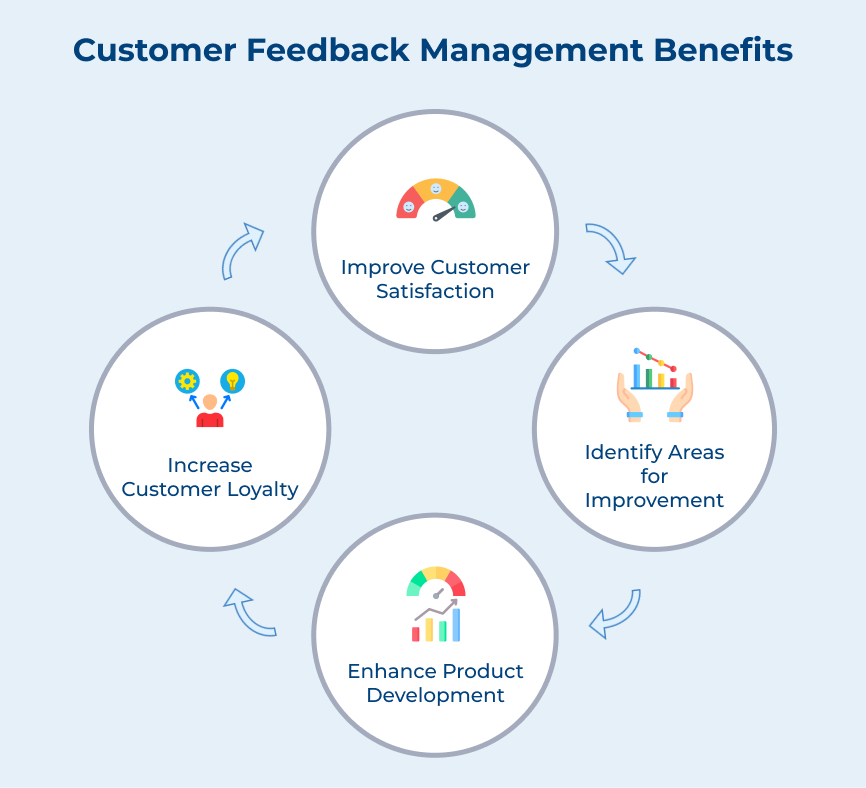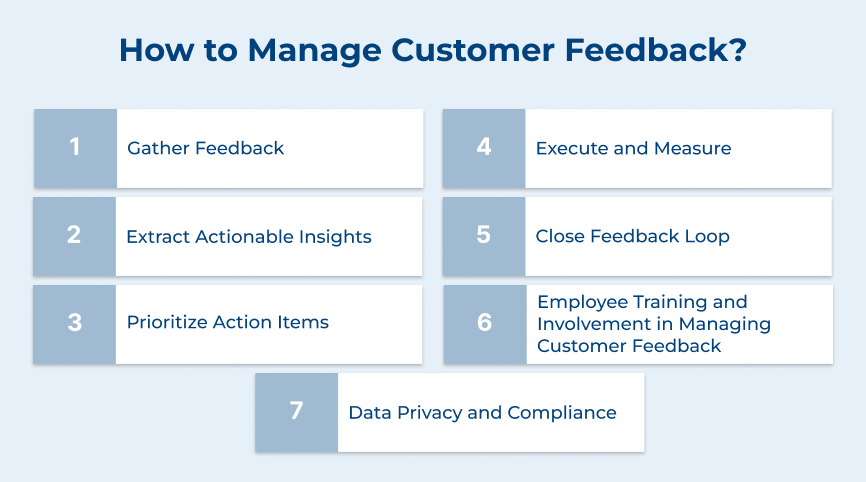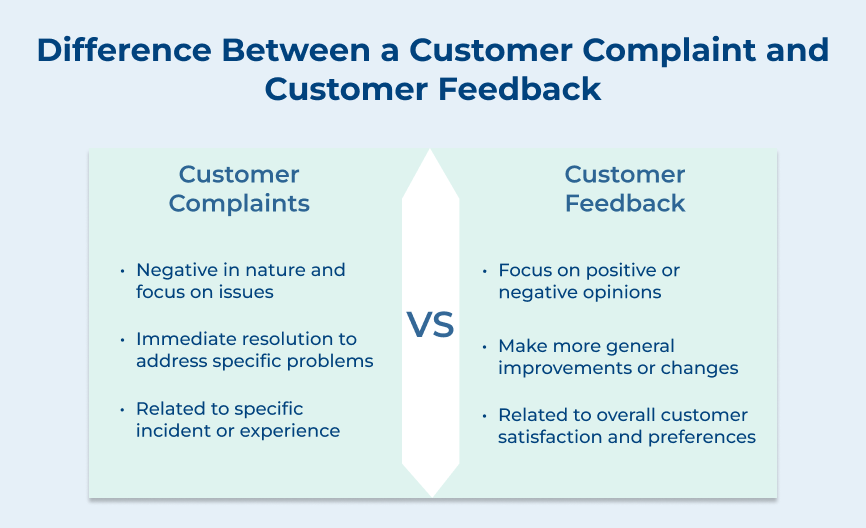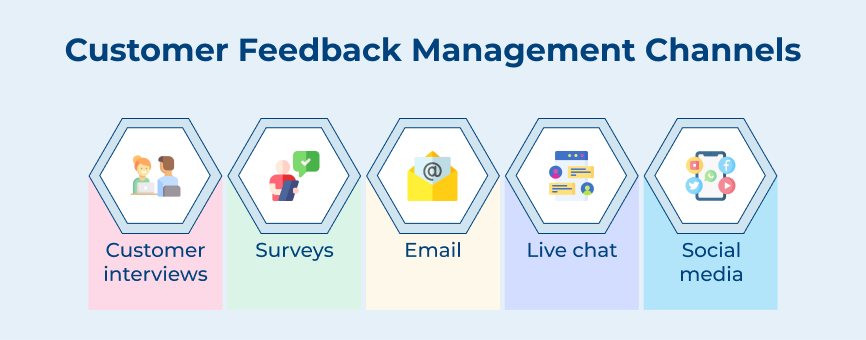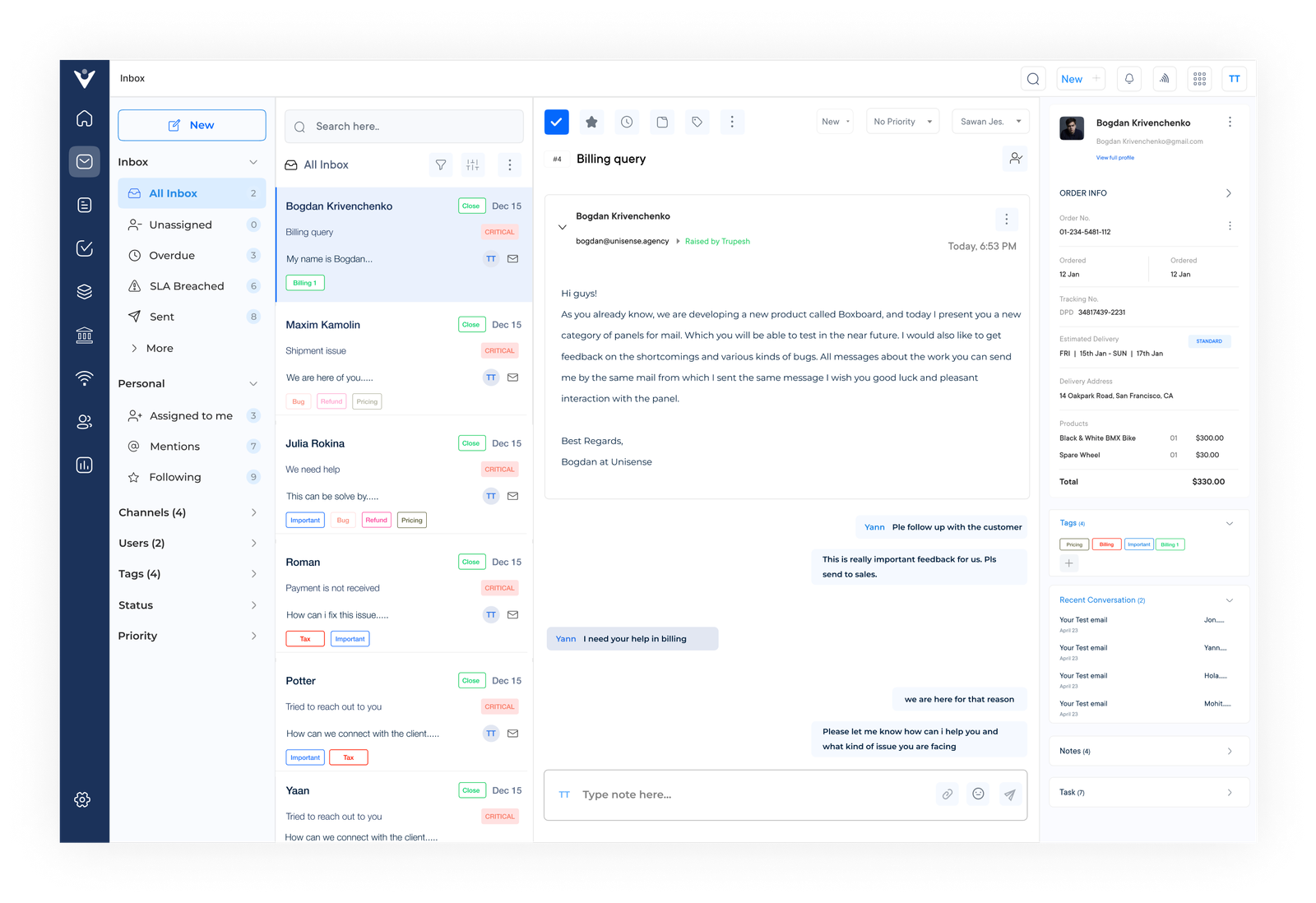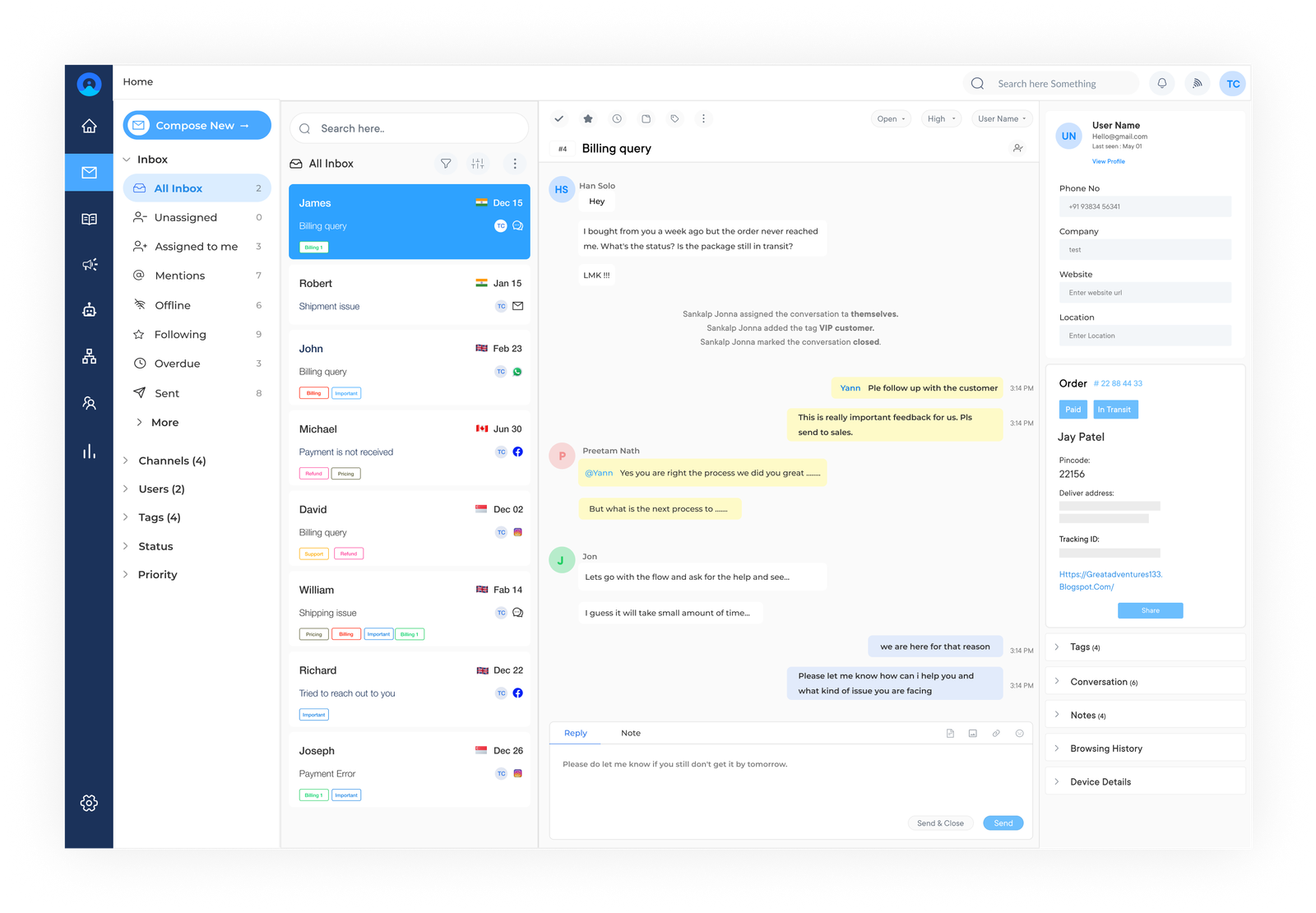1. Gather Feedback
Gathering feedback involves actively seeking out input from customers to understand their experiences, preferences and suggestions for improvement. Businesses identify strengths and weaknesses to make needed adjustments to their offerings.
Businesses can manage customer feedback effectively through surveys, forms, social media listening and reviews. Continuously gathering feedback can help businesses stay informed about customer needs and preferences. It allows them to make informed decisions to improve their offerings.
Pro tips:
- Make feedback collection easy and accessible for customers through various channels like email, websites, or social media platforms.
- Actively listen to customer feedback and show appreciation for their input, whether positive or negative.
- Act upon the feedback received promptly to demonstrate responsiveness and commitment to customer satisfaction.
2. Extract Actionable Insights
One crucial step in managing customer feedback is to extract actionable insights from the feedback received. It involves analyzing the feedback to identify trends, patterns and key issues that can help improve the solution. Businesses can gain valuable insights into customer preferences, pain points and areas for improvement.
The step is essential in managing customer feedback as it allows us to make data-driven decisions and prioritize areas that need attention. Let’s assume, if multiple customers mention a specific issue with a product, the company can address it promptly to improve customer satisfaction.
Pro tips:
- Use sentiment analysis tools to categorize feedback as positive, negative, or neutral.
- Look for recurring themes or keywords in the feedback to identify common issues.
- Create a feedback loop by sharing insights with relevant teams and taking action based on the feedback received.
3. Prioritize Action Items
Managing customer feedback can be overwhelming, but by prioritizing action items, businesses can address customer concerns. Prioritizing action items is crucial because it helps to focus on the most pressing issues that need to be resolved.
Identifying and addressing the high-priority items first can show customers that their feedback is valued. It also shows that the brand is committed to providing excellent service. Let’s consider If many customers report the same issues like slow web responses or checkout problems, promptly addressing them can avoid customer loss.
Pro tips:
- Categorize feedback based on urgency and impact on customer satisfaction
- Communicate with the team to assign tasks and responsibilities for resolving feedback
- Monitor progress and follow up with customers to ensure that their concerns have been addressed satisfactorily
4. Execute and Measure
Managing customer feedback is a crucial aspect of any business. Step 4 of the process, “Execute and Measure,” plays a key role. It involves implementing the digital marketing strategies that have been planned and tracking their performance to see how they resonate with the customers.
Businesses can learn customer preferences through marketing campaigns and success measurement. The feedback allows them to make necessary adjustments to better meet the customer’s needs. Let’s assume that if a particular campaign receives positive feedback and drives a high conversion rate, businesses may want to replicate similar strategies in future campaigns.
Pro tips:
- Utilize online survey tools to gather feedback directly from customers
- Monitor social media channels for customer comments and reviews to gauge sentiment.
- Implement A/B testing to compare different marketing strategies and see which resonates best with the target audience.
5. Close Feedback Loop
Closing the feedback loop helps to manage customer feedback by enhancing trust and loyalty with customers. Customers are likely to stay loyal if they see their feedback is valued and leads to positive changes. It can lead to increased customer satisfaction, retention and even advocacy.
A use case can involve sending a personalized follow-up email to apologize and address concerns when a customer leaves a negative review. The proactive approach can turn a dissatisfied customer into a satisfied one.
Pro tips:
- Respond promptly and professionally to all customer feedback to show that the business is dedicated to improving.
- Keep track of customer feedback and follow up with customers at regular intervals to ensure their issues have been resolved.
- Use feedback to identify trends and make strategic business decisions that align with customer preferences.
6. Employee Training and Involvement in Managing Customer Feedback
Employee training and involvement in managing customer feedback is a crucial step in ensuring customer satisfaction. Equipping employees with skills and resources to address customer feedback can enhance the overall customer experience. Training employees in effective communication and issue resolution can reduce negative reviews.
A use case could be a retail store that implements a training program for its employees on how to handle customer complaints and feedback. Providing employees with the tools and knowledge to address customer concerns, can enhance the overall shopping experience for customers.
Pro tips:
- Providing ongoing training and support to ensure employees stay updated on best practices
- Encouraging employees to actively seek feedback from customers and take ownership of resolving issues
- Recognizing and rewarding employees for their efforts in improving customer satisfaction.
7. Data Privacy and Compliance
Managing customer feedback plays a crucial role in improving overall customer satisfaction and brand reputation. One important aspect is ensuring data privacy with regulations such as GDPR and CCPA. Data privacy and compliance measures help to protect customer information. It also builds trust with the audience.
Potential risks could be mitigated by ensuring that the business is transparent with the customer data. Implementing secure data storage and obtaining consent for feedback show commitment to respecting privacy rights.
Pro tips:
- Communicate how customer feedback is collected, stored and used to build trust with the audience.
- Keep up-to-date with data privacy regulations and ensure that the processes align with current compliance standards.
- Use encryption and secure data storage methods to minimize the risk of data breaches.
Difference Between Customer Complaint and Customer Feedback
In this article, we will delve into what sets them apart and why mastering this distinction can transform your customer relations strategy into a powerful tool for success.






